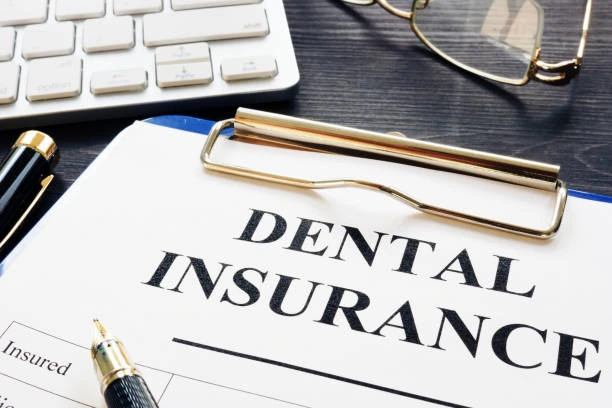Dental insurance in 2025 is experiencing notable shifts, both in terms of coverage specifics and the integration of emerging technologies. The landscape is rapidly evolving: insurers are introducing more individualized plans, virtual consultations are becoming standard, and there is increasing inclusion of certain cosmetic procedures that contribute to overall wellness.
This trend reflects insurers’ efforts to respond to consumer demands and leverage advancements in digital healthcare. As a result, dental insurance is no longer static; plans now frequently incorporate AI-driven assessments and teledentistry, and some extend partial reimbursement for procedures previously considered purely aesthetic.
For policyholders, these developments mean that remaining informed is now essential. It is critical to understand what each plan includes, how digital tools may influence access to care and reimbursement, and how these changes align with both personal health objectives and financial priorities. In short, an active, informed approach is necessary to navigate the complexities of modern dental insurance and optimize both health outcomes and benefits utilization.
Key Changes in Dental Insurance for 2025
Recent shifts in dental insurance policies for 2025 are poised to significantly influence both cosmetic dentistry and general oral healthcare. Increasingly, individuals are pursuing dental procedures not solely for health reasons, but also for aesthetic enhancement. Recognizing this trend, insurance providers are adjusting their offerings to better address these evolving patient preferences. The latest policy updates are designed to promote greater accessibility and affordability, while also streamlining care through the adoption of digital tools and innovative technologies. For patients interested in maximizing their benefits—particularly those considering both functional and cosmetic dental treatments—a thorough understanding of these changes is essential.
Expanded Coverage in Medicare Advantage Plans
In 2025, Medicare Advantage plans are set to expand their dental benefits, offering more comprehensive coverage that extends beyond preventive care to include major dental procedures. While these improvements are intended to promote better oral health among beneficiaries, it is important to recognize that some plans may simultaneously increase out-of-pocket expenses or reduce certain benefits. Therefore, a thorough review of individual plan details remains crucial to making informed decisions regarding coverage.
Adjustments in Coverage Limits and Networks
Insurance companies are once again altering annual coverage limits and making changes to their in-network provider lists. These modifications may create challenges regarding both the affordability and accessibility of dental care. For instance, certain plans are reducing their annual maximums, which limits the amount of services that will be covered and may increase out-of-pocket costs for patients. Additionally, patients may find that their preferred dental providers are no longer included in-network, further complicating access to care.
Integration of Teledentistry
Teledentistry has seen significant growth in recent years, particularly within dental insurance frameworks. With the advent of virtual consultations and remote patient monitoring, individuals now have increased access to dental expertise without the traditional barriers of in-person visits. Insurance providers are gradually adapting by incorporating coverage for these digital services, acknowledging their value in promoting preventive care and facilitating early diagnosis. This shift represents a notable advancement in both patient convenience and the broader scope of dental healthcare delivery.
Technological Advancements in Dental Insurance
In 2025, technological advancements are significantly altering the landscape of dental insurance, particularly in the realms of routine care and cosmetic dentistry. With the integration of artificial intelligence in claim processing and the increasing prevalence of virtual consultations, patients now experience more efficient and streamlined access to necessary treatments. These innovations are not only expediting administrative procedures but also enhancing overall patient experiences within the dental healthcare system.
Digital Claims Processing
The integration of digital claims processing has significantly transformed administrative operations within dental practices. By minimizing paperwork and reducing the likelihood of errors, these systems enable more efficient management of claims. As a result, reimbursement timelines are shortened, which not only streamlines practice workflows but also positively impacts the overall patient experience. Patients benefit from expedited processes and improved service, aligning with the broader trend toward modernization in healthcare administration.
AI-Powered Diagnostics
Artificial intelligence is now playing a significant role in the field of dentistry. By analyzing dental x-rays and patient data, AI systems assist clinicians in identifying conditions and determining appropriate treatment strategies. This technology enhances diagnostic accuracy and allows for the development of individualized care plans, moving away from a uniform approach to treatment. The integration of AI into dental practice represents a notable advancement, as it enables clinicians to combine their expertise with sophisticated data analysis tools.
Financial Implications for Policyholders
Dental insurance in 2025 is undergoing significant transformation, particularly in relation to elective procedures such as cosmetic dentistry. The shifting landscape of coverage policies, escalating out-of-pocket expenses, and the emergence of alternative financing arrangements have all contributed to increased complexity in the decision-making process for patients. A thorough understanding of these financial developments is essential for individuals seeking to navigate the costs and benefits associated with aesthetic dental care, as uninformed choices may result in considerable economic burden.
Premium and Cost Adjustments
While certain individuals may experience consistent dental insurance premiums, others are witnessing increases, largely attributable to escalating healthcare costs. It is advisable for policyholders to closely examine their existing plans, paying particular attention to potential adjustments in premiums, deductibles, and co-payments. Such scrutiny will help anticipate and manage out-of-pocket expenses more effectively.
Wellness Incentives
Recently, insurance companies have begun offering various wellness incentives aimed at promoting preventive care. For instance, individuals who consistently attend dental check-ups and maintain good oral hygiene may be eligible for reduced premiums or receive supplementary coverage benefits. The underlying idea is straightforward: by encouraging policyholders to prioritize regular dental visits, insurers hope to foster healthier habits while also potentially reducing long-term healthcare costs.
Tips for Navigating Dental Insurance Changes
Examine Plan Provisions: It is imperative to scrutinize the details of your dental insurance policy, noting coverage limitations, approved providers within the network, and any policy amendments effective in 2025. Such diligence ensures preparedness and maximizes benefits.
Leverage Teledentistry: Virtual dental consultations and follow-up appointments represent a significant advancement in accessible care. If your insurance accommodates these services, their utilization can enhance efficiency and convenience.
Monitor Technological Developments: Staying informed about emerging dental technologies is advisable, as these innovations may influence both treatment options and the scope of insurance coverage.
Seek Expert Guidance: For nuanced concerns or uncertainties, consulting with dental professionals or insurance representatives can provide clarity and support informed decision-making.
Frequently Asked Questions (FAQs)
1. Are there significant changes to dental insurance in 2025?
Yes, 2025 brings expanded dental insurance coverage options that cater to a wider range of treatments, including some aspects of cosmetic dentistry. Many plans now integrate teledentistry services, allowing for virtual consultations and improved access to care. Alongside these advancements, insurers are adjusting premiums and modifying coverage limits to reflect rising healthcare costs and new technology-driven services. These changes aim to balance affordability with comprehensive care, giving patients more flexibility and control. It’s important for policyholders to review their plans carefully to understand how these updates impact their benefits and out-of-pocket responsibilities.
2. How does teledentistry affect my dental insurance?
Teledentistry offers virtual dental consultations, follow-ups, and certain diagnostic services, allowing patients to receive care from the comfort of their homes. In 2025, many insurance plans are beginning to recognize the value of these services and are expanding coverage to include them. This shift enhances both accessibility and convenience, especially for individuals in remote areas or with busy schedules. For those exploring cosmetic dentistry, teledentistry can serve as a first step—providing professional guidance and treatment planning without the need for an in-office visit. As technology continues to evolve, virtual care is becoming an essential part of modern dental healthcare.
3. Will my dental insurance premiums increase in 2025?
Premium changes in 2025 vary depending on the insurance provider and the specifics of each plan. Some dental insurance policies may experience premium increases due to rising healthcare costs, expanded coverage options, and the integration of new technologies like teledentistry. Others may remain relatively stable, especially those that focus on preventive care and basic services. For individuals interested in cosmetic dentistry, it’s important to note that premiums typically do not cover elective procedures, but enhanced plans may offer partial reimbursement for treatments with functional benefits. Reviewing and comparing plans annually can help policyholders make cost-effective choices while maximizing their dental benefits.
4. What should I do to prepare for these changes?
To make the most of your dental insurance in 2025 especially if you’re considering cosmetic dentistry, it’s essential to stay proactive. Start by reviewing your current plan to understand what is and isn’t covered, including any changes in premiums, limits, or added benefits like teledentistry. Stay informed about new offerings or upgraded plans that may better align with your dental care goals. Consulting with your dental provider can also help you determine which treatments are eligible for coverage and how to optimize your benefits. Being informed and strategic ensures your insurance supports both your oral health and aesthetic needs.


